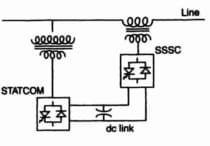 |
| Electrical Materials MCQs |
1. Clausius Mossotti
equation is valid for an internal field constant of_____.
a. 1
b. ¼
c. ½
d. None of the above
2. Ferrites
have_____.
a. High specific gravity compared to iron
b. Low resistivity
c. Low eddy current loss
d. Low copper loss
3. Loss in a
dielectric may occur due to______.
a. Ionization
b. Conductivity
c. Polarization
d. Any of the above
4. Dielectric loss
due to ionization is peculiar to______.
a. Gaseous dielectrics
b. Non-uniform dielectrics
c. Non-metallic dielectrics
d. Non-ferrous dielectrics
Magnetic Properties of Materials
5. The temperature of
the anti-ferromagnetic-to-paramagnetic transition is called_____.
a. Debye temperature
b. Neel temperature
c. Curies-Weiss temperature
d. Antiferromagnetic Curie temperature
6. The transition
from the ferromagnetic to the paramagnetic state is named after_____.
a. Debye
b. Neel
c. Curie-Weiss
d. Curie
7. A suitable
material for audio and TV transformers is______.
a. Very pure Fe
b. Fe-30% Ni
c. Fe-4% Si
d. Ferrite
8. Magnetic
susceptibility is_____.
a. Proportional to temperature but independent of magnetizing field
b. Proportional to temperature but inversely proportional to magnetizing field
c. Inversely proportional to temperature but independent of magnetizing field
d. Inversely proportional to both temperature and magnetizing field
9. For a compass
needle and computer disc drive_____.
a. Soft magnetic material is required
b. Hard and soft magnetic materials respectively are required
c. Hard magnetic material is required
d. Soft and hard magnetic materials respectively are required
10. For high speed of
reading and storing the in formations in a computer, the use is made of______.
a. Ferromagnetics above 7680C
b. Ferrites
c. Pyroelectrics
d. Piezoelectrics
11. Magnetic
susceptibility of material is -1. It belong to the kind of solid known as
______/
a. Garnet
b. Anti-ferromagnetic
c. Superconductor, type I
d. Ferrite
12. Magnetostriction
is a phenomenon which occurs in_______.
a. Ferromagnetic materials
b. Ferrimagnetic materials
c. Antiferromagnetic materials
d. Paramagnetic materials
13. Bohr magneton is
defined as______.
a. Magnetic moment of an electron orbital motion
b. Magnetic moment of an electron spin
c. Magnetic moment of an nucleus spin
d. None of the above
14. At Neel
temperature_____.
a. Susceptibility is maximum
b. Susceptibility is minimum
c. Permeability is maximum
d. Permeability is minimum
15. Magnetostriction
is the phenomenon_______.
a. Of changes in physical dimensions of ferromagnetic materials during magnetization
b. Of changes in permeability of ferromagnetic material during magnetization
c. Of producing magnetism in conductor
d. Of producing electricity in ferromagnetic materials
16. The converse of
magnetostriction effect is_______.
a. Bitter powder effect
b. Curie effect
c. Villari effect
d. Thompson effect
17. The magnetic
permeability is maximum for______.
a. Dimagnetic materials
b. Ferromagnetic materials
c. Paramagnetic materials
d. None of the above






0 Comments
If you have any doubt, feel free to ask.